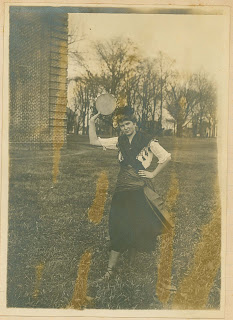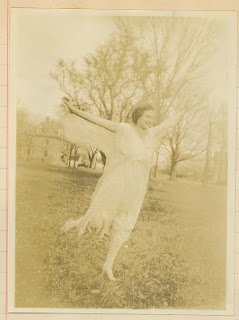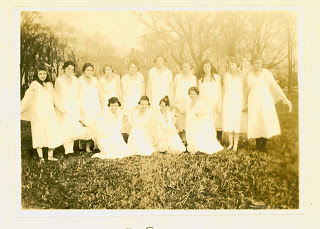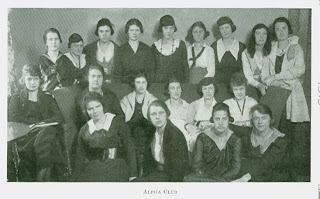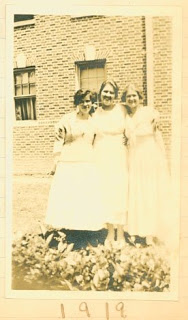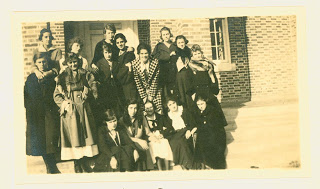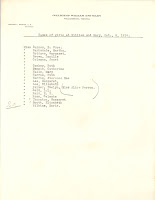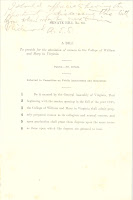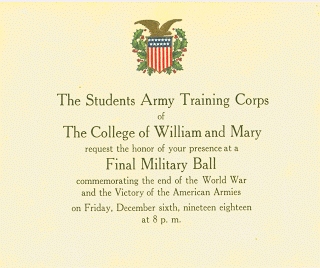 Less than a month after the end of World War I, the Students' Army Training Corps (SATC) at William and Mary disbanded. On December 6, 1918, family, friends, students, and faculty were invited to an open house at the Corps' barracks and then to a parade review and ceremony at the athletic field. The day ended with the SATC Final Military Ball, "commemorating the end of the World War and the victory of the American Armies." The Virginia Gazette referred to the dance as a "celebration of the S.A.T.C. [that] will long be remembered by William and Mary boys, and will will mark a unique period in the history of the old college."
Less than a month after the end of World War I, the Students' Army Training Corps (SATC) at William and Mary disbanded. On December 6, 1918, family, friends, students, and faculty were invited to an open house at the Corps' barracks and then to a parade review and ceremony at the athletic field. The day ended with the SATC Final Military Ball, "commemorating the end of the World War and the victory of the American Armies." The Virginia Gazette referred to the dance as a "celebration of the S.A.T.C. [that] will long be remembered by William and Mary boys, and will will mark a unique period in the history of the old college."[...] the greatest part of the celebration remained for the evening, when the formal military ball, the principal social affair of the military organization, was held in the Mess Hall. It had been planned a considerable time in advance, and all members of the command attended and brought partners. In addition to the young ladies of the college, many attended from Williamsburg, Richmond, Norfolk, Washington and other cities. Many of the soldiers had their sweethearts from a distance to attend. The whole affair was so well organized and conducted that a more successful one would have been rare indeed. The walls, chandeliers, trimmings, and furnishings of the large hall were lavishly decorated with the national colors in various designs of presentment, all of which was pleasingly illuminated by the brilliant colored lights.
The guests assembled at 8 o’clock, the ladies wearing the latest creations of evening dress and the men all wearing their dress military uniforms. [...]
At 10 o’clock there was an intermission of a few minutes, during which a neat little cap, called the “Liberty Cap” by the guests designed and made especially for the occasion, was issued to each lady present, and was worn by her during the remainder of the evening.
Not the least element in the evening’s jocund entertainment was the bounteous supply of punch and other refreshments. May the reader not inquire what the punch was made of. [...]
The final dance was announced by the bugle call for taps and came to a close exactly at 1:25 o’clock in the morning. The out-of-town guests were entertained by friends at the college and in Williamsburg.
This post was composed by Kate Hill.
For additional information about the first women students at the College of William and Mary see: When Mary Entered with her Brother William: Women at the College of William and Mary, 1918-1945 by Laura F. Parrish; "The Petticoat Invasion": Women at the College of William and Mary, 1918-1945; The Martha Barksdale Papers; and the Women at the College of William and Mary page on the Special Collections Research Center Wiki.
